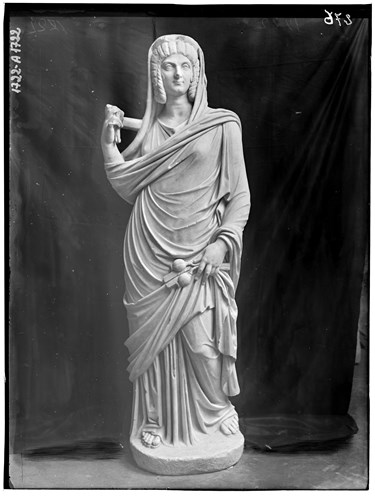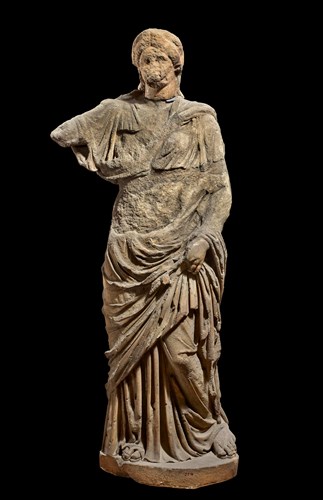Ancient Greeks were familiar with the poppy plant and its hypnotic properties. In the eighth century BCE, Hesiod referred to Mecone, a town near Corinth famous for the large expanses of land dedicated to the cultivation of the poppy. According to legend, Demeter first discovered the plant there. The Greeks considered the poppy a magical or poisonous plant that could be used in religious ceremonies. Hypnos (Sleep), Nyx (Night), and Thanatos (Death) were deities that were often depicted carrying poppies or wearing poppy wreaths. The plant appeared on the statues of Apollo, Pluto, Asclepius, Aphrodite, and Kybele, while ears of corn were occasionally added to the bunch of poppies.
The poppy was associated with Demeter from an early period. Researchers have identified a Mycenaean deity holding poppies or wearing a crown with poppy capsules as Demeter. However, the poppy variety that mainly was associated with the goddess was the opium poppy (Papaver somniferum), which the Roman poet Virgil called the flower of Ceres. In a version of the myth, Demeter ate poppies to fall asleep and forget the pain from the sudden loss of her daughter.

Julia Domna as Ceres, holding poppies and ears of wheat, 3rd century, sculpture, Ostia Archaeological Museum © Archivio Fotografico del Parco Archeologico di Ostia Antica
The connection between the plant and the goddess was manifold. First, the numerous seeds of the capsule suggest fertility, Demeter’s greatest gift to humanity. The poppy was also cultivated as a cereal crop, so it is reminiscent of her role as goddess of grain. Finally, opium, which is a product of the plant, connects the poppy with sleep and death, another vital aspect of Demeter. The association was strong and widespread in the Greek world. Demeter is often depicted holding a wheat sheaf in one hand and poppy capsules in the other, while the poet Theocritus described a statue of Demeter “holding wheat stalks and poppies in either hand”.
As a symbol of Demeter, the poppy is present in Eleusis but there is a catch. The flower has one or two tiers of broad petals, eight or twelve petals in each tier. This is an opium poppy, but there is some confusion over the presence of two tiers of petals. Double poppies do not produce more or better opium than single poppies, and there is no evidence that the rites of Demeter were associated exclusively with either plant version. The solution may lie in the Homeric Hymn to Demeter. Persephone was in the process of admiring a “hundred-headed” flower when the earth parted, and Hades appeared. Most researchers identify this magical flower with the narcissus, the flower of the underworld and death. But in Eleusis, the double opium poppy may have served a double purpose. On the one hand, it would evoke the association of Demeter with death and regeneration, while on the other hand, it would represent the wondrous flower that doomed Persephone.

Marble portrait statue of a woman with attributes of Demeter; left hand holds ears of corn and poppy-head, 69 - 98, sculpture, The British Museum © The Trustees of the British Museum






